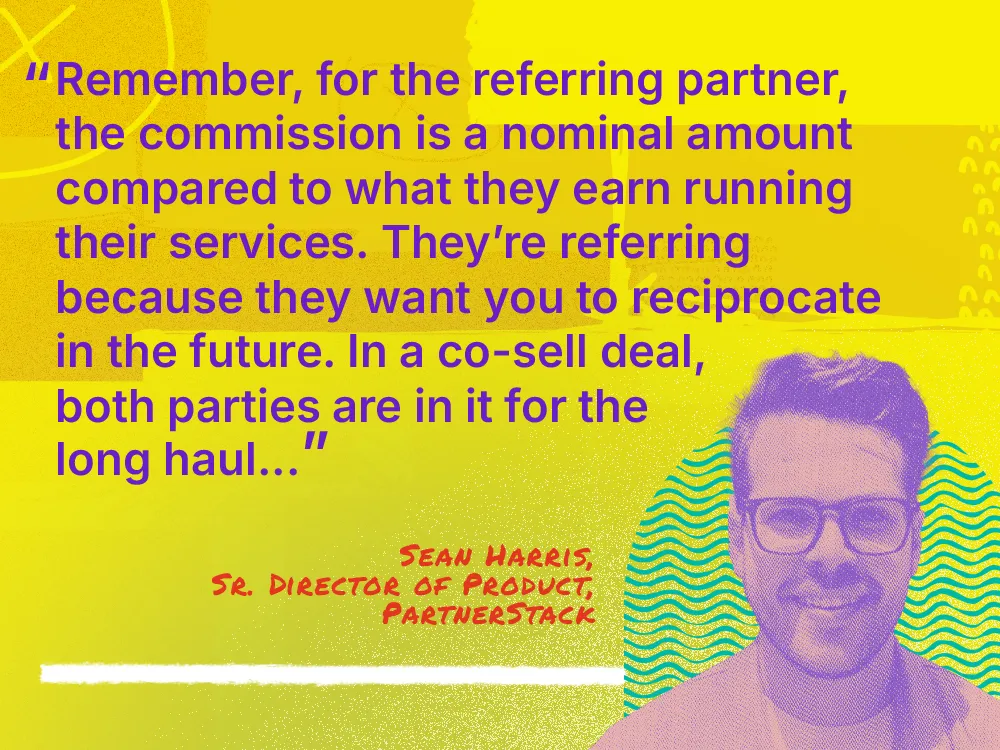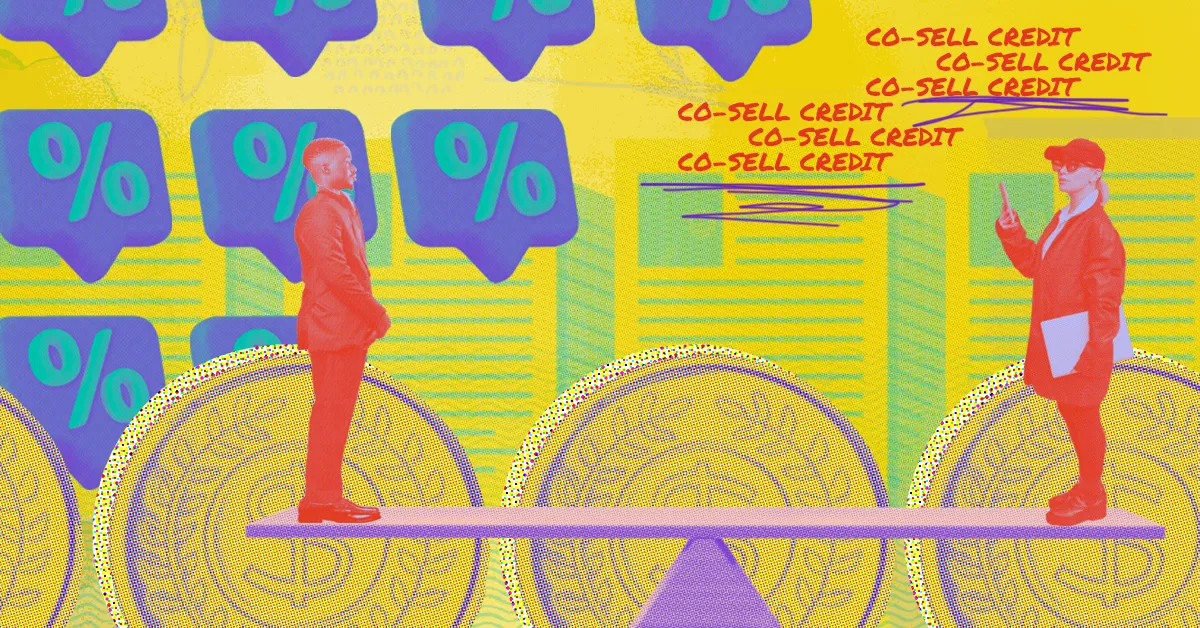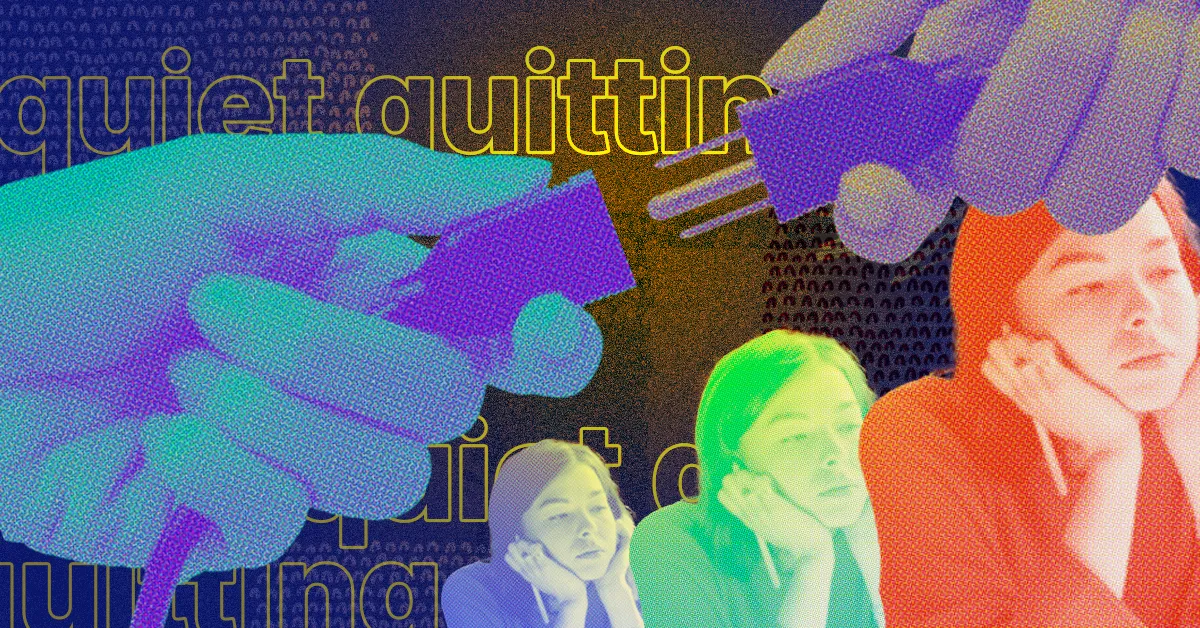HereŌĆÖs a brain teaser for you:
A partner invites your sales team to a happy hour at an industry conference. One of your reps ends up seated next to a highly qualified lead. They get to talking, then a partner rep joins the conversation, realizing the lead could benefit from both solutions. A few months later, that lead signs with both companies.
So, who gets the credit for your deal?
From your repŌĆÖs perspective, the partner didnŌĆÖt have much to do with the sale of your product. They followed up, handled objections and negotiated for your software. It was their deal.
But from your perspective, the partner clearly played a role. Without the invite, the rep may not have even met the lead. Plus, the lead may not have been as receptive without the partnerŌĆÖs endorsement ŌĆö even if the partner wasnŌĆÖt involved in every step (and got a closed deal themselves).
Co-sell attribution questions like this come up all the time in SaaS partnerships. And if credit isnŌĆÖt clearly defined, you risk alienating both your sales team and your partners.
So in this article, weŌĆÖll review the various flavors of co-selling, how B2B companies handle partner attribution and what you can do to prevent internal and external channel conflict as your program grows ŌĆö with expert help from , Senior Director of Product at ╔½║ąų▒▓ź.
How does co-selling happen?
Integration partners and agency or consulting partner programs are most often associated with co-selling. But Harris likes to think of co-sell more like a natural progression of partnerships:
1. You may have a straight referral program to start
An agency sends over a referral, then your internal reps sell it. ŌĆ£We see this a lot in burgeoning eComm or martech companies that form relationships with agencies,ŌĆØ Harris points out.
Though itŌĆÖs not a full co-sell motion, partners will often give some clues as to what, exactly, the end customer might be looking for, what features would be best to mention and who would be best to talk to.
2. Next, you might dip your toes into joint selling
Partner reps join prospect calls with your sales reps, and they work together to get mutual deals over the finish line. For example, you and an integration partner might co-sell your complementary software products. Or, you and a consulting partner might sell your software and their implementation package.
Companies often use co-sell tools like to surface shared prospects and customers in each partnerŌĆÖs CRM. Some use to enrich that data and uncover warm paths into the account, like shared champions, prior tool usage or even references to a specific problem they could solve with your joint solution in company 10-Ks or executive podcast appearances.
See more: The co-sell tech stack that enterprise teams actually use in 2025.ŌĆŹ
3. Then, you start to form reseller partnerships
Even though a partner is selling your product on their own ŌĆö and the deal may even be on their paper ŌĆö you might still step in for especially big deals.
ŌĆ£YouŌĆÖre going to want to help them in whatever way you can, because it could be a huge new logo for you. So, you end up working with the partner to get that deal over the finish line,ŌĆØ Harris shares.
Why attribution gets complicated in co-selling
Eventually, you might have scenarios where all three evolutions of partnerships come into play.
ŌĆ£Some of ╔½║ąų▒▓źŌĆÖs biggest vendors have programs with multi-partner attribution. An affiliate partner drives a referral, another partner closes the deal and then a third partner ends up servicing it,ŌĆØ Harris says.
With so many parties involved, determining who gets what can get thorny ŌĆö fast. A common way for SaaS companies to think about partner attribution and rep commission is to split deals into partner-sourced revenue and partner-influenced revenue.
Partner-sourced revenue┬Ā
Sourced revenue comes from leads that partners submit directly to you through a referral. Alternatively, a partner could find a potential customer themselves, then bring you in to co-sell.
Commission setup: Since you wouldnŌĆÖt have had access to these leads without a partnerŌĆÖs help, partners tend to share payouts with internal sales teams.
Partner-influenced revenue┬Ā
Influenced revenue comes from indirect partner contributions. The example we discussed in the introduction ŌĆö a partner invites your internal sales team to an event where they connect with a qualified lead that they ultimately close ŌĆö could be considered influenced revenue. Partners may also recommend your product to their clients.
Commission setup: Though these activities donŌĆÖt have a direct impact on the sales cycle, deals may not have closed without the partnerŌĆÖs credibility or exposure. So while reps take home a larger share of the compensation on partner-influenced deals, partners will still receive a small portion.
Other variants
Even within the partner-sourced and partner-influenced structures, thereŌĆÖs usually some variability.┬Ā
For example, a partner who refers a deal (partner-sourced revenue) tends to get lower compensation than a partner who co-sells a deal with you (also partner-sourced revenue). ŌĆ£Remember, for the referring partner, the commission is a nominal amount compared to what they earn running their services. TheyŌĆÖre referring because they want you to reciprocate in the future. In a co-sell deal, both parties are in it for the long haul,ŌĆØ Harris explains.┬Ā
A partner who briefly mentions your solution on a sales call (partner-influenced revenue) tends to get lower compensation than a partner who asks you to speak at an event (which could also lead to partner-influenced revenue). A passing reference just doesnŌĆÖt carry the same weight with prospects as being featured as a special guest.ŌĆŹ

ŌĆŹRelated: What is co-selling in a partner ecosystem (and how can you do it?).
If itŌĆÖs so complex, why do companies still co-sell?
At this point, you might be thinking, ŌĆśIf itŌĆÖs this hard to pull off, why do companies even bother co-selling?ŌĆÖ Because:
It expands your reach
Partners can get you into deals you never wouldŌĆÖve been able to get into before. ŌĆ£Most agencies arenŌĆÖt working with super small businesses, so if youŌĆÖre trying to sell to the enterprise, co-sell deals are the way to go,ŌĆØ Harris points out.
We canŌĆÖt name names, but at ╔½║ąų▒▓ź, many top customers are driving a huge percentage of their enterprise business through co-selling. In some cases, partners are bringing in so much pipeline that vendors are spending less on marketing. Their partners have built entire practices around selling their product.
See more: Read revenue-driving partnerships in action with real-world case studies.
It drives efficiency
Agency and consulting partners in particular arenŌĆÖt just helping you sell, theyŌĆÖre supporting some other function, like onboarding and implementing as well. And if they donŌĆÖt do it right, their reputation is on the line.
As a result, partners tend to build rapport in the account and can be extremely useful when it comes time for a renewal or an upsell opportunity arises.
How to set up co-sell deals for success
Co-selling has significant upsides, but getting it right requires alignment, clarity and the right systems in place from the start. HereŌĆÖs how to set yourself up for success:
Only co-sell when it makes sense
ItŌĆÖs easy to assume that the only reason partners refer, co-sell or resell is because they are compensated. But if thatŌĆÖs the case, whatŌĆÖs stopping them from partnering with competitors who will compensate them, too?
ŌĆ£If youŌĆÖre thinking about partnering with agencies and consulting firms, you have to remember that theyŌĆÖre building their business around specific tools. So if you canŌĆÖt uniquely differentiate your product from a competitorŌĆÖs and articulate how youŌĆÖre going to help their customers, you wonŌĆÖt be part of their business,ŌĆØ says Harris.
That differentiation is important when partnering with integrators, too, but thereŌĆÖs another element to consider: timing.
ŌĆ£If the end customer isnŌĆÖt evaluating your product and your partnerŌĆÖs product at a similar time in the buying cycle, itŌĆÖll be much more of a one-way partnership. If a customer is purchasing your product and then purchasing another product after, you might send a partner business, but they wonŌĆÖt necessarily send you business because the customer may have already purchased a product like yours,ŌĆØ Harris emphasizes.
ŌĆ£But if itŌĆÖs the opposite, youŌĆÖre in for an amazing partnership. The combination is mutually beneficial because the customer needs both of them to succeed.ŌĆØ
Tier your compensation
As you scale, you need to start thinking about clear mechanisms of compensation. Typically, the more value partners deliver across the lifecycle, the more they earn.
Consider setting up a structure to:
- Only award flat fees for partner-sourced or influenced deals and give the remaining commission to your internal sellers.
- Offer a higher rev share to partners who manage the account or provide support implementation post-sale.
- Give additional incentives to partners who drive ongoing usage or generate their own upsell opportunities.

Use tools to help you track
Partner attribution reporting is tough because there are so many ways things can slip through the cracks. Harris recalls chatting with one company whose partner sent a referral over email, but because it wasnŌĆÖt formally logged as a partner-sourced deal in their PRM or CRM, all the credit went to the internal sales rep.
ŌĆ£They had to go to their finance team and do a retroactive pull-back on the repŌĆÖs comp to pay the partner. Messing with peopleŌĆÖs money is a really, really bad experience,ŌĆØ he warns.
To avoid a circumstance like that, you could add steps to your final deal attribution review, like:
- Looking in Crossbeam to see which deals might have had partner input and retroactively tag it as partner-sourced or partner-influenced if necessary.
- Using Clay to validate whether a partner truly influenced a deal through social media or another channel.
Or, you could use one of ╔½║ąų▒▓źŌĆÖs AI-powered features to automate the process. More on that below.
Identify referrals from Slack using ╔½║ąų▒▓ź
If you and your partners have a Slack Connect workspace, you can log leads discussions as co-sell opportunities or referrals, and the AI agent will create a corresponding record in ╔½║ąų▒▓ź (that can then also sync to your CRM).
Parse referral emails
If you receive an introductory email and want to log it as a partner referral, you can forward it to track@partnerstack.com. ╔½║ąų▒▓źŌĆÖs AI agent will pull relevant information into your referral record fields and follow up to confirm submission. If any info is missing, the system will prompt you to send more.
Send referrals through the HubSpot app
If a partner is working a deal, they can send a referral directly to your company without leaving their CRM using ╔½║ąų▒▓źŌĆÖs HubSpot Connect app.
Co-selling doesnŌĆÖt have to be complicated
The more transparent and repeatable your attribution model, the easier it is to align your sales and partner teams and turn co-selling into a competitive advantage.
Want to see how ╔½║ąų▒▓ź can help you track and measure partner and sales involvement at every stage of every deal? Book a demo to see our AI agent in action.
















